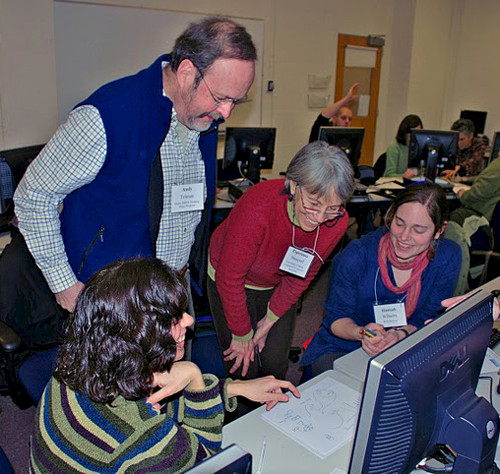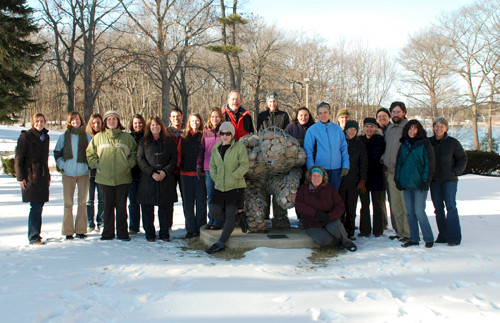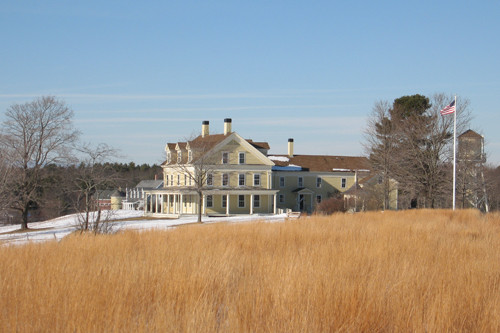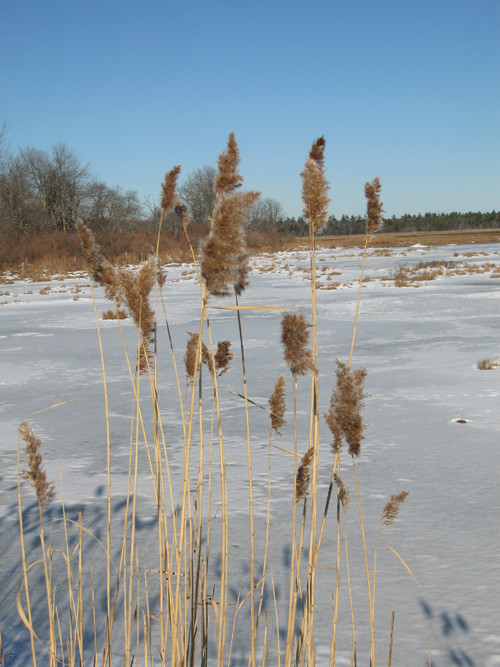Science communication in southern Maine
Joanna Woerner ·Single digit temperatures, predictions of snow, and a six-inch blanket of the white stuff already on the ground seemed like a chilly proposition to Emily Nauman and me, Joanna Woerner, both Maryland Easternshorers who are acclimated to mild winters. However, as IAN Science Communicators we were eager to brave old man winter in order to present a Communicating Science Effectively course at the University of New England in Biddeford, Maine. Happily, the freezing temperatures were warmed by enthusiastic participants, intense brainstorming sessions, and a chance to reconnect with one of the founders of our profession, Rachel Carson.

Twenty-two participants from University of New England, Wells Reserve, Maine Drinking Water Program, Maine Department of Environmental Protection, Maine NEMO Program, and six other organizations gathered to learn the principles of science communication. This enthusiastic group hit the ground running by sharing their ideas and communication strategies, providing thoughtful suggestions for others, and developing drafts of communications pertaining to their work. The great facilities at the University of New England and the hard work of organizers Chris Feurt and Zach Steele made this a most enjoyable course!

Still invigorated from our course experience, Emily and I took the opportunity to explore the southern Maine coast and learn more about another Maryland resident, Rachel Carson. Of course as scientists committed to solving not just studying environmental problems and communicating those solutions to the public, we at IAN are inspired by Rachel Carson. Rachel Carson was not only a scientist and a writer, she was an advocate for the Chesapeake Bay. When science jobs were hard to come by in 1932, Rachel wrote articles about the natural history of the Bay for the Baltimore Sun. So when we had the chance to visit a National Wildlife Refuge bearing her name and a National Estuarine Research Reserve with beautiful trails and unique education experiences, we bundled up to go exploring.
No one can doubt the beauty and uniqueness of Maine’s southern coastline. Part of its uniqueness stems from the transitioning landscapes. Eastern deciduous forest transition into boreal forest and the sandy shores of the mid-Atlantic are gradually replaced by the rocky shores of New England as you travel north. These transitions create unique habitats, 7,600 acres of which are protected by the Rachel Carson National Wildlife Refuge. Established in 1966 and renamed in honor of Rachel Carson in 1969, the Refuge contains tidal marshes, estuaries, and forest ecosystems which provide nesting habitat for migratory birds, nursery habitat for fish, and forage habitat for bald eagles.

With our full winter gear donned, we set out on the Rachel Carson Trail. (Located on Route 9 between Kennebunk Port and Wells.) Even in what to us felt like the dead of winter, there were signs of life all along the trail. We heard the songs of many birds and the pecking of a frantic woodpecker. When we didn’t hear wildlife, the quiet and the stillness of the area put us in a state of awe. Amazingly, we were able to hear the ice cracking and shifting on the Merriland River, which runs adjacent to the trail. The pop of a champagne cork made us jump, and it took us a moment to realize that the pop came from a new crack in the ice directly in front of us. Remember that the Arctic air sitting over Maryland last month was an unusual event. On occasion our rivers freeze, but we were seeing something more complex than the pancake ice we experience along the Choptank River. On the Merriland River some of the ice was slanted at a 45 degree angle. Other bits of ice stuck straight up in the air like miniature glaciers. Changing salinities from tidal flow and periods of thawing and refreezing act on the ice and can result in these angles.

We continued our exploration of Maine’s southern coast at the Wells National Estuarine Research Reserve. (Located just off Route 9 in Wells.) In addition to protecting 2,250 acres of coastal habitats, Wells Reserve also focuses on expanding knowledge of coasts and estuaries, engaging people in environmental learning, and involving communities in conserving natural resources. Wells Reserve provides both recreational and educational opportunities. Its trails allow visitors to explore barrier beach, estuary, and forest ecosystems, and the Coastal Ecology Center and Laboratory, a Coastal Resource Library help communicate the importance of coastal ecosystems and disseminate the current research conducted to understand them better. Working in partnership with Wells Reserve is the Laudholm Trust, a non-profit organization committed to protecting coastal ecosystems.

We began learning about the local ecology in a historic salt marsh farmhouse which is now home to the Visitor Center. The farm house and its outer buildings hearken back to the turn of the previous century when salt hay (spartina patens) made marsh land more valuable than upland.
After learning about the history of the place we were ready to explore some of the natural landscape. The barrier beach trail to Laudholm Beach took us through beautiful marsh and led us to the mouth of the Little River. We experienced beautiful snowy landscapes and enjoyed trying to identify animal tracks in the snow. While hiking this trail, we also discovered that we are not very good trackers.

"It is a wholesome and necessary thing for us to turn again to the earth and in the contemplation of her beauties to know of wonder and humility."
- Rachel Carson